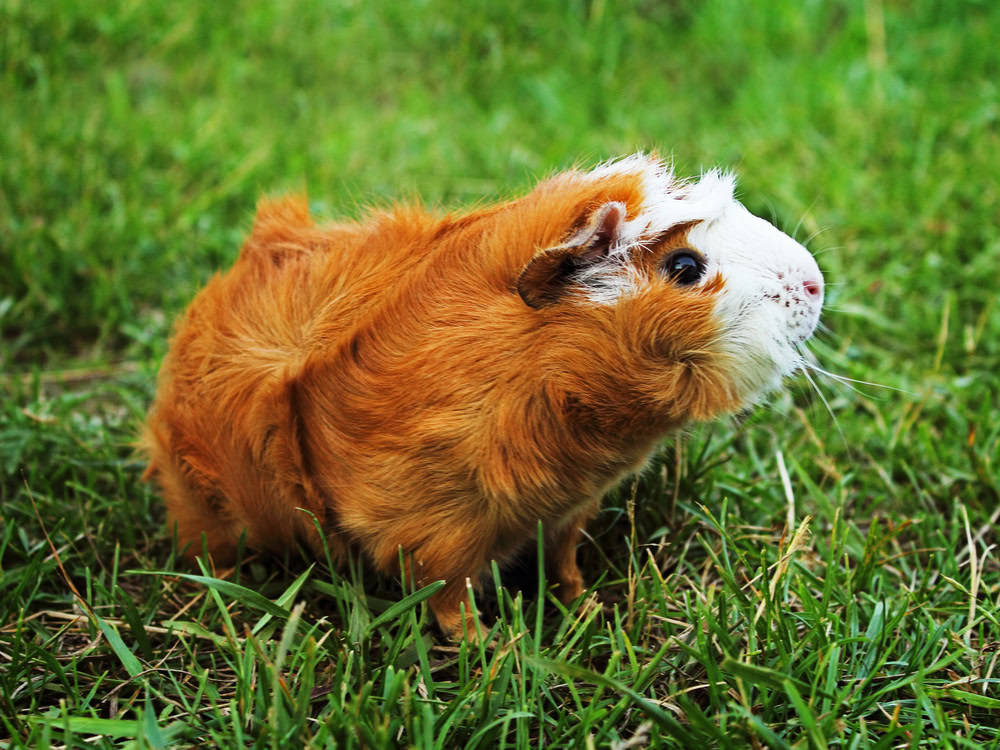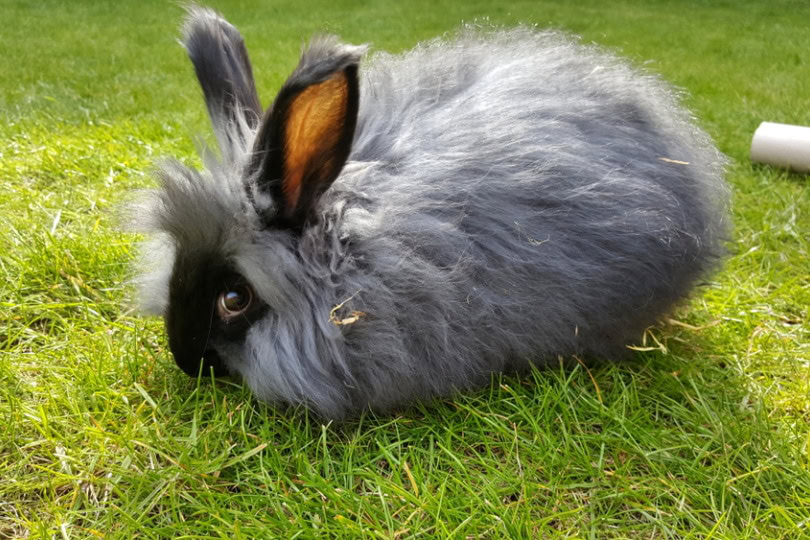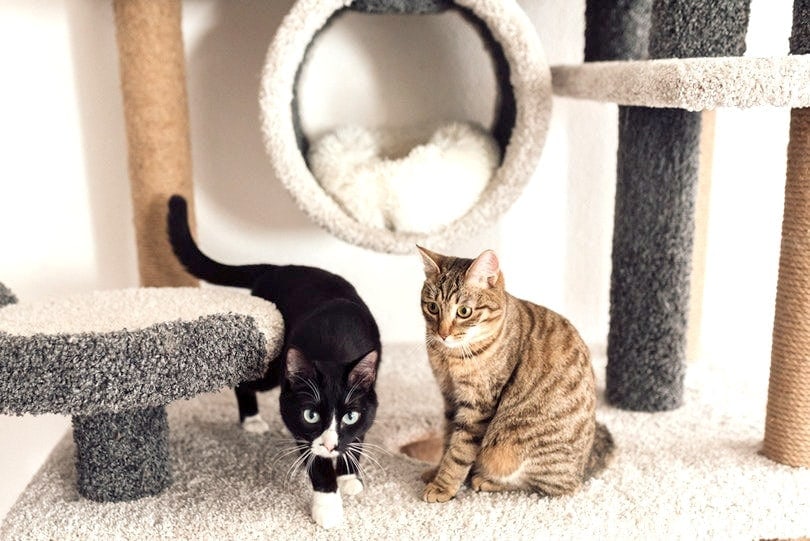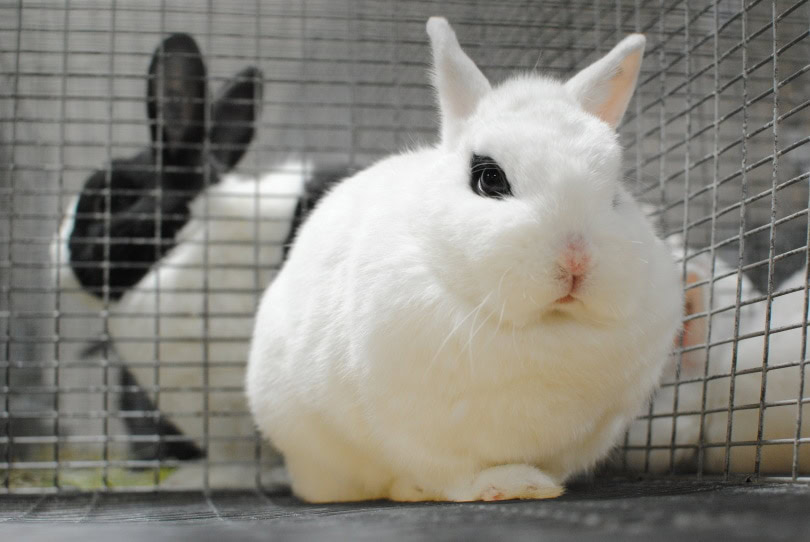Click to Skip Ahead
The Abyssinian guinea pig is a popular breed due to their distinctive fur and friendly personality. They’re best known for the rosettes on their coat, which are whorls of hair that grow in all directions. These make this guinea pig look quite unique compared to many others. Most have around six to eight rosettes, though some may have as many as 10.

Breed Overview
| Size: | 8–12 inches |
| Weight: | 2–3 pounds |
| Lifespan: | 5–7 years |
| Similar Breeds: | Texel guinea pig, Peruvian guinea pig, Silkie guinea pig |
| Suitable for: | People of all ages looking for a friendly guinea pig |
| Temperament: | Friendly, playful, outgoing |
Most people purchase these rodents due to their unique coats and friendly personalities. They’re also relatively large for a guinea pig, which enables them to function better in homes with children. They are bred in a variety of colors, so your Abyssinian is sure to be unique.
However, these guinea pigs require more interaction than many other breeds. Their coat also needs extra attention, as it can get tangled easily. They tend to be quite vocal, so they aren’t ideal for those who want a guinea pig because of their quiet nature.
Abyssinian Guinea Pig Characteristics

How Much Do These Guinea Pigs Cost?
These guinea pigs tend to be more expensive than many others, as there is a high demand due to their unique coat. They usually range from $20 to $100. However, the price can vary depending on the breeder and coat color. Rarer coat colors tend to be more expensive.
Reputable breeders tend to charge more than pet stores or online sellers. The guinea pigs are often more socialized and have undergone more health testing, ensuring that they’re ready for their new homes. All these extra tests and time typically translate to a higher price.
Younger guinea pigs are typically more expensive, as they are in higher demand. Older guinea pigs tend to be much less expensive.
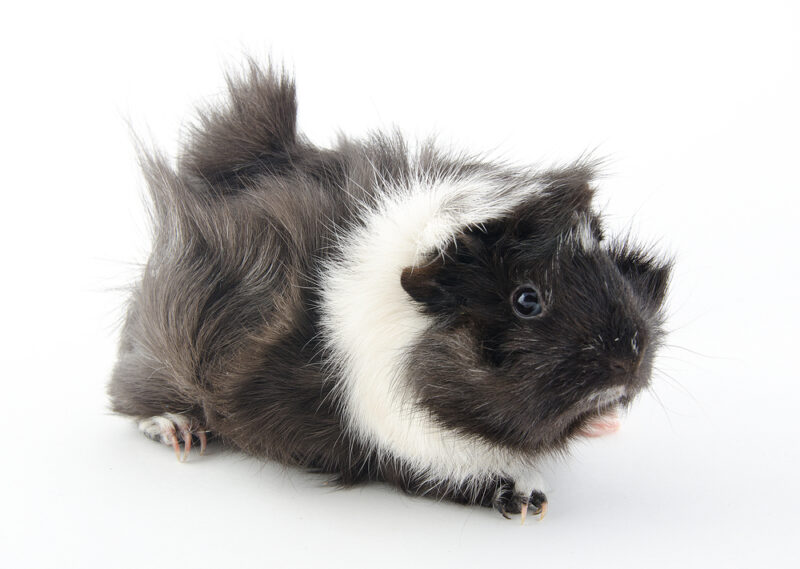
Temperament & Intelligence of the Abyssinian Guinea Pig
Abyssinian guinea pigs are known for being outgoing and playful, which is one reason they’re so popular. They’re often described as being more vocal than other guinea pigs too, and they typically require extra attention.
As relatively social creatures, they often require the company of other guinea pigs. Many owners purchase two or so to ensure they don’t get lonely during the day. It is possible to keep these guinea pigs alone, but they will require more interaction from their owners.
Typically, these critters aren’t that shy. They enjoy exploring their surroundings, which usually means that they require less handling or socialization. (That doesn’t mean they don’t need any socialization. However, they don’t need as much as some others.) Abyssinians are also playful animals, and they love to run around and play. They tend to be more active than other animals, so you should plan to spend time supervising them out of their cage each day.
Often, these guinea pigs are considered intelligent. They can be trained to perform simple tricks with enough patience. That said, they also tend to get bored easily, which is one reason they require more interaction. You’ll also want to consider investing in more toys for this breed so they can stay entertained when you aren’t home.
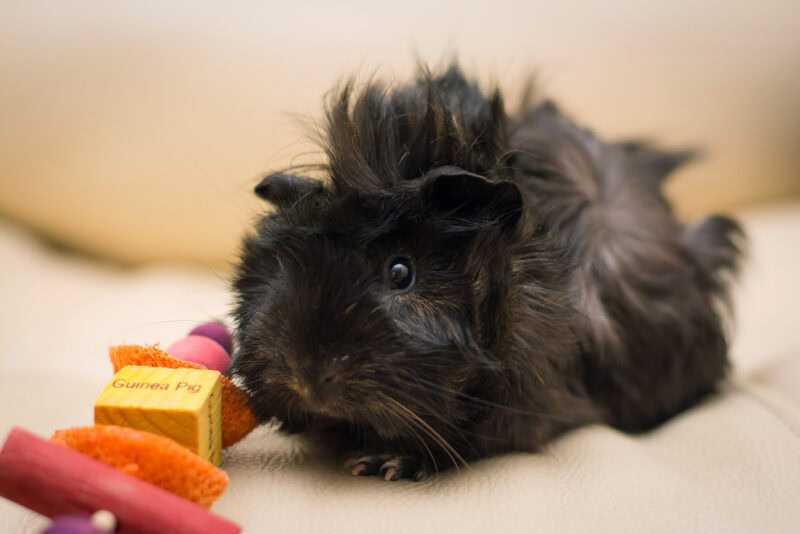
Do These Guinea Pigs Make Good Pets?
Abyssinian guinea pigs can make good pets for people who are looking for particularly interactive cavies. They tend to be exceptionally friendly and outgoing, making them easier pets for younger owners too. If you have children, these guinea pigs may be a good choice.
However, they do require more attention from their owners. This can make them somewhat higher maintenance. They also need extra grooming, as their fur can get tangled and matted more easily.
Many people like this breed because they have a relatively longer lifespan. That means you can expect more years of companionship with your furry friend. They’re also relatively easy to train, which is always a nice benefit.
Does This Guinea Pig Get Along With Other Pets?
Abyssinian guinea pigs typically get along just fine with other guinea pigs, especially those that are about the same size as them. They often do best when put with another cavy of the same species, as they are exceptionally social. They can also get along with other small pets, like hamsters. However, they cannot be housed with these other animals, as they all have different needs.
Of course, a slow introduction is important. Supervise them closely whenever they are with other pets, and separate them at the first time of fear or aggression.
Abyssinians can be more wary of dogs and cats. Plus, those animals tend to have a prey drive, which can make them dangerous to keep with guinea pigs. They can coexist to some extent. However, supervision is important, and you shouldn’t have predatory animals near your cavy 24/7 (as this can cause chronic stress).
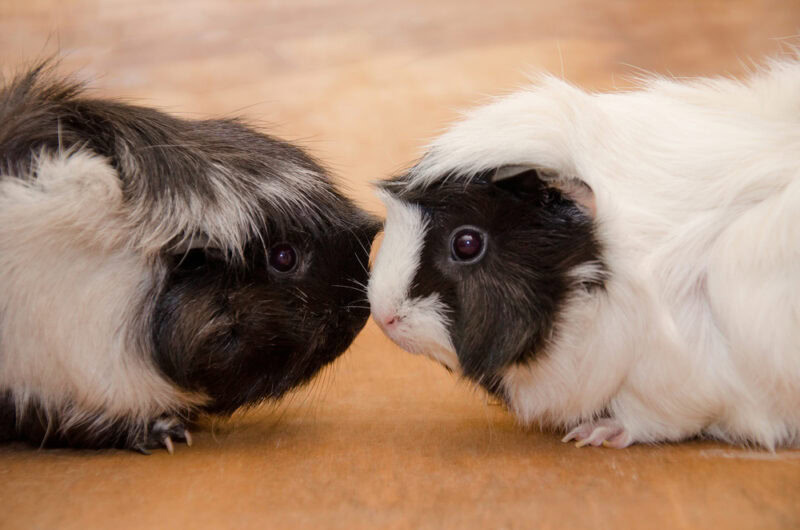

Things to Know When Owning an Abyssinian Guinea Pig
Food & Diet Requirements
Like all guinea pigs, Abyssinians are herbivores and have specific dietary requirements to maintain their health. For the most part, they should consume primarily hay, fresh vegetables, and a small number of pellets.
Hay should be the primary component of their diet. It should make up about 75% of their daily intake, as it provides the fiber they need for their digestive system. It also helps wear down their teeth and is necessary to keep their gut biome healthy. In most cases, timothy hay is recommended, but you can also use a range of other hays.
Fresh vegetables provide around 25% of their diet. They’re a solid source of vitamins, minerals, and other essential nutrients. Leafy greens are best, including romaine lettuce, kale, and spinach. However, bell peppers, cucumbers, and carrots are also great choices. Iceberg lettuce, avocado, and citrus fruits should all be avoided, as they can be potentially harmful to guinea pigs.
You should also serve pellets but only in relatively small amounts—around 5% of their diet. Choose high-quality pellets that are designed explicitly for guinea pigs. In paritcular, ensure that they contain enough vitamin C to meet your cavy’s needs, and they should be low in protein and calcium.
Guinea pigs cannot produce their own vitamin C. Therefore, you’ll need to supplement their diet to meet their needs. Often, this is done through vitamin C-rich veggies or liquid vitamin C drops.
Habitat Requirements
The minimum cage size for two Abyssinian guinea pigs (remember, they do best in pairs) is 7.5 square feet. For each additional guinea pig, you should add at least 3 square feet. A larger cage is always better, of course, as it provides more room for your guinea pigs to run around, explore, and engage in natural behaviors.
Choose a cage with a solid bottom. Grates and wire mesh floors can cause sore feet (and potentially lead to serious injuries). Wire mesh can be used on the sides and top of the cage to provide proper airflow. However, ensure that the openings are not small enough for your guinea pig to get their head stuck. Don’t place the cage in direct sunlight or drafts, as these can cause extreme temperature variations that your guinea pig may have a hard time adapting to.
Use an absorbent bedding along the bottom of the cage. Don’t use cedar shavings, as these contain an essential oil that can harm their respiratory system (that’s why cedar is so smelly). Aspen shavings and other paper-based options are typically suitable and widely available.
Provide plenty of hideouts in the cage, along with plenty of toys for them to entertain each other with. Hideouts can be made from cardboard boxes, or you can purchase commercial guinea pig hideouts. You can put in a range of different toys, including balls and puzzle toys.
All guinea pigs need their cage maintained to a comfortable range, usually around 65–75 degrees Fahrenheit. Avoid placing the cage near a source of heat, like a space heater.
Be sure to clean out your guinea pig’s cage regularly. Droppings and uneaten food can lead to bacteria growth and eventually, disease. Disinfect the cage regularly and replace the bedding as necessary.
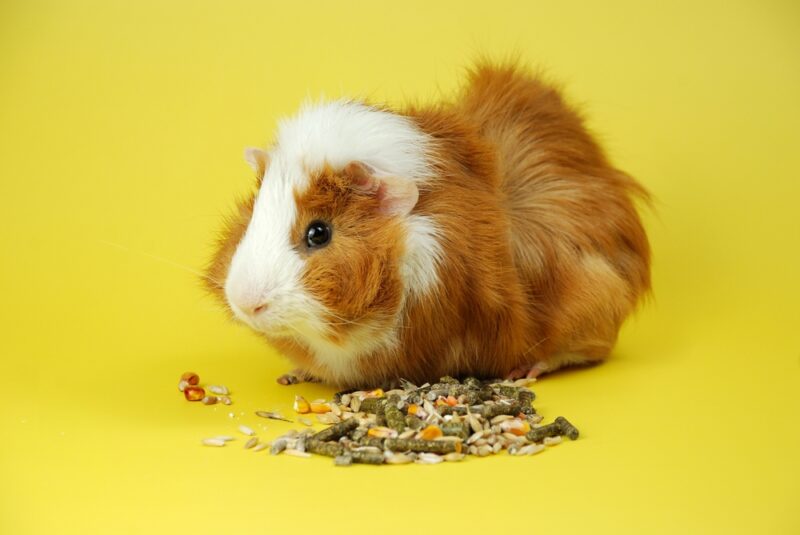
Exercise & Sleeping Needs
Abyssinian guinea pigs are active, so you should plan on providing them with plenty of exercise. They should have at least 2 hours of unsupervised playtime outside of their cage each day, if not more. They should be able to engage in natural behaviors like running and jumping. Interaction is also important, as they tend to be rather social.
Ensure that the play area is safe and secure. Remove all hazards like electrical cords, toxic plants, or small objects that your guinea pig may mistake for food. Your guinea pig should always be supervised when outside.
Guinea pigs are crepuscular, which means they are most active at dawn and dusk. Usually, they will sleep for two longer stretches at night and during the day. However, they will also take several shorter naps. They sleep a lot—often up to 18 hours a day. Be sure they have a comfortable, safe sleeping area within their cage, such as a cozy hideout.
You should allow your guinea pig to sleep undisturbed during their sleeping periods. While you may want to interact with your guinea pig, they also need undisturbed rest.
Training
Most people don’t think about training their guinea pigs. However, they are actually exceptionally trainable animals with patience and consistent practice. Many cavies can learn a variety of different tricks.
Select a quiet area for training that’s as distraction-free as possible. Avoid areas with lots of noise or movement, as these may scare or distract your guinea pig. You want to choose a time when your pet is awake and active, often around sunrise or sunset. Preferably, they should be calm and relaxed.
Training sessions should be kept fairly short, as guinea pigs don’t have long attention spans. Gradually increase the duration as your cavy progresses. Make the training enjoyable and aim to end on a high note. Stop while you’re ahead before you or your pet gets frustrated.
Positive reinforcement typically works best. Reward your guinea pig’s desired behaviors with treats and gentle attention. Be cautious with providing too many treats, as these can make your cavy gain too much weight.
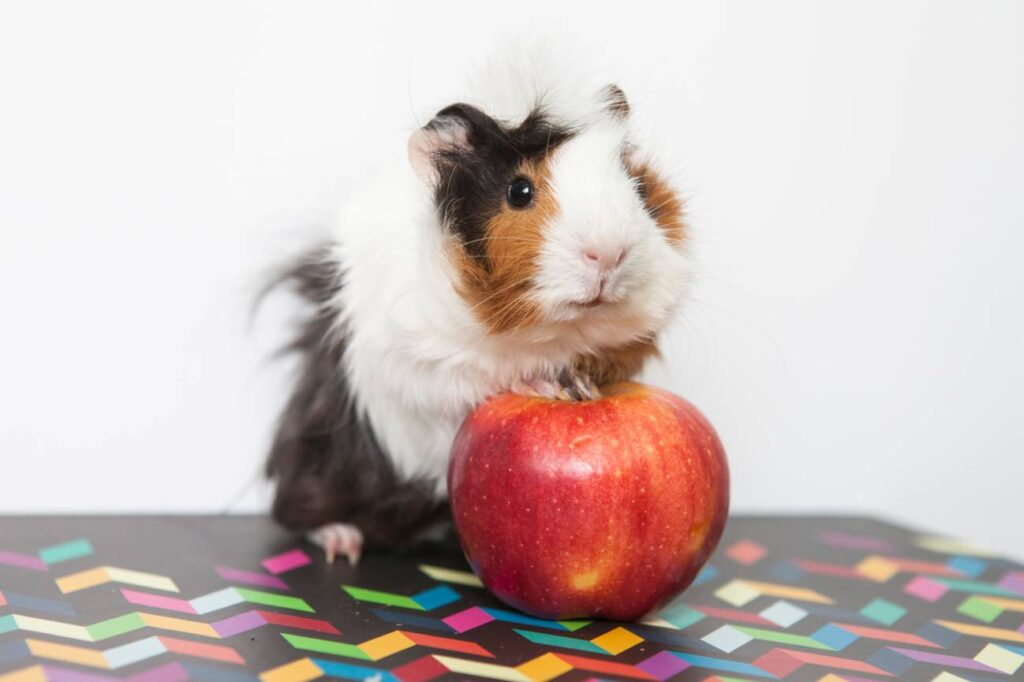
Grooming
Abyssinian guinea pigs need regular grooming to maintain their beautiful coats. They can easily get tangles and mats, which can cause discomfort and even skin infections. Once grooming problems stack up, they can be challenging to fix. Therefore, it’s important to stay ahead of mats and similar grooming issues.
Your guinea pig’s coat needs to be brushed about every other day. Start early, and use positive reinforcement to teach your pet to be calm during grooming sessions.
Brush their coat in the direction of their hair. Use a soft bristle brush to remove loose fur and detangle any knots that have developed. Pay special attention to your guinea pig’s rosettes, as these can easily get tangled. Use a small comb to detangle them as necessary.
Most guinea pigs also need their nails trimmed, usually every 2–3 weeks. You can do this yourself at home, as it’s pretty straightforward. Purchase special, tiny trimmers for this purpose. Your cavy’s dental health should be taken care of by their hay, which should wear their teeth down naturally. You can also provide chew toys made of wood or other hard materials.
Lifespan and Health Conditions
These guinea pigs are long-lived, usually living around 5–7 years. However, their lifespan can be affected by many different factors, including diet and genetics.
Like all guinea pigs, Abyssinians are susceptible to certain health conditions. Respiratory infections are particularly troublesome and relatively common across this species. These infections can be caused by either viruses or bacteria, and they can be contagious between guinea pigs.
Dental problems can occur if you don’t provide the proper diet. These rodents’ teeth continuously grow, and they have to chew on hard materials to wear them down. If this doesn’t occur, their teeth can become overgrown.
- UTI
- Skin infection
- Dental problems
- Respiratory problems
UTIs are common in guinea pigs, though females tend to get them more than males.
Male vs. Female
There are a few differences between the males and females of this breed. Males are often larger than females, though not necessarily by much. It’s also possible to find males that are smaller than females.
Some temperament differences may occur too. However, these are much less set in stone than the physical differences. Some claim that females are quieter and more social and that males tend to be a bit more dominant.


3 Little-Known Facts About Abyssinian Guinea Pigs
1. Each Has Unique Rosettes
The whorls of hair are one of the unique things about this breed. Each individual has unique whorls of hair, and there is no predictable way that these whorls are placed on a particular guinea pig.
2. They’re Vocal
These guinea pigs are known for being more vocal than most other breeds. They tend to communicate with each other through squeaks, chirps, and whistles.
3. Abyssinian Guinea Pigs Are Considered Easy to Train
Most people don’t think of guinea pigs as easy to train. However, Abyssinians can easily learn basic commands (and even more advanced ones). Training is recommended to make them easier to handle.
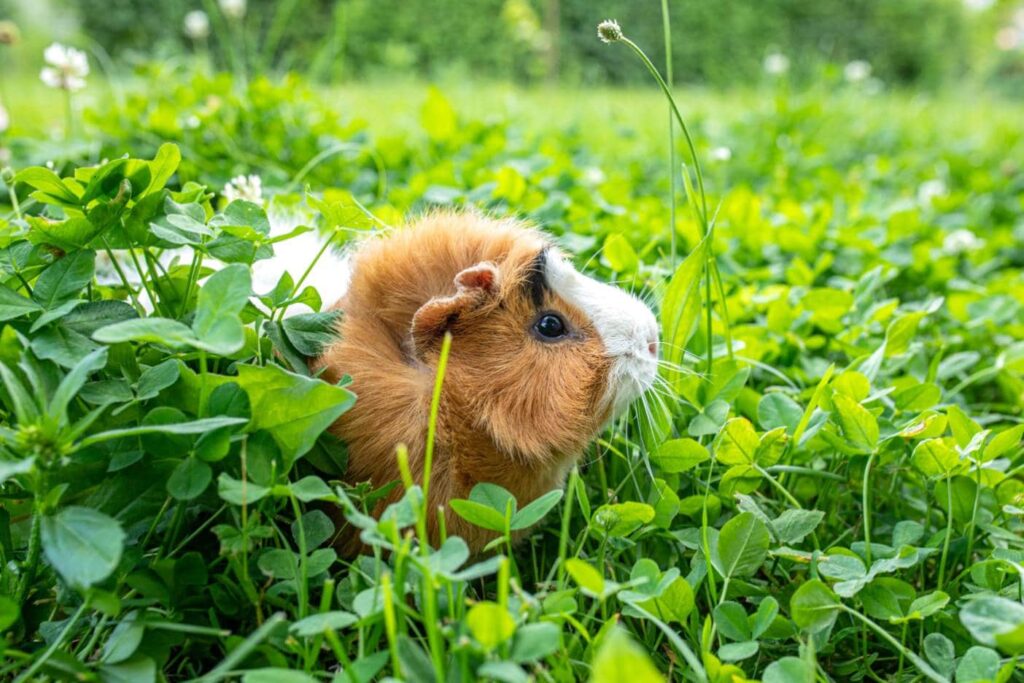

Final Thoughts
Abyssinian guinea pigs are incredibly unique due to the whorls of hair that occur all over their bodies. They’re also friendly and outgoing, making them ideal for those interested in a more interactive pet. However, this also means they need more attention. Their whorls also tend to get tangled, so they tend to need more grooming than most other guinea pigs.
This breed can make a great pet for the right family. However, it’s important that you know exactly what you’re getting into. Most also recommend purchasing at least a pair of these guinea pigs, as their social nature means that they do best when kept with a companion.
Featured Image Credit: Tettania, Shutterstock
